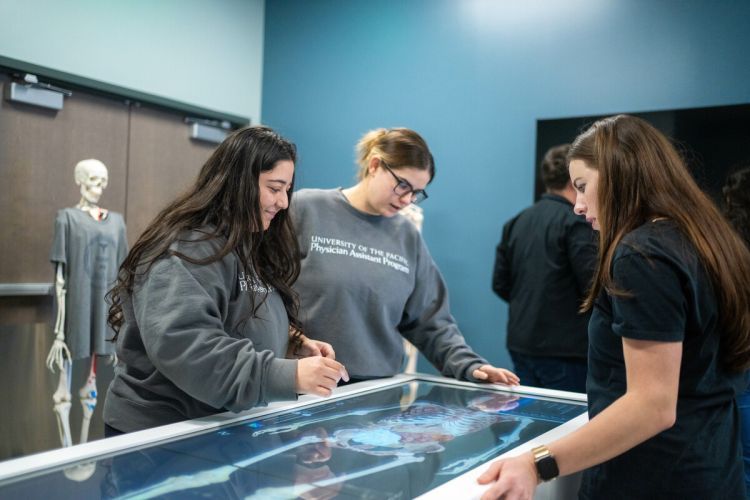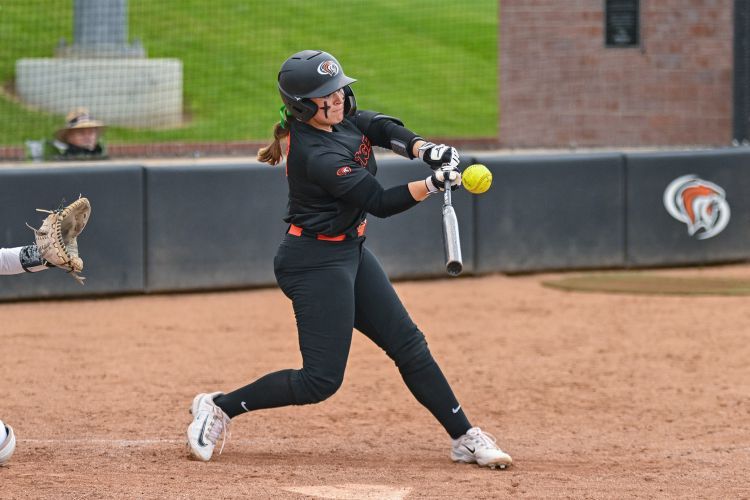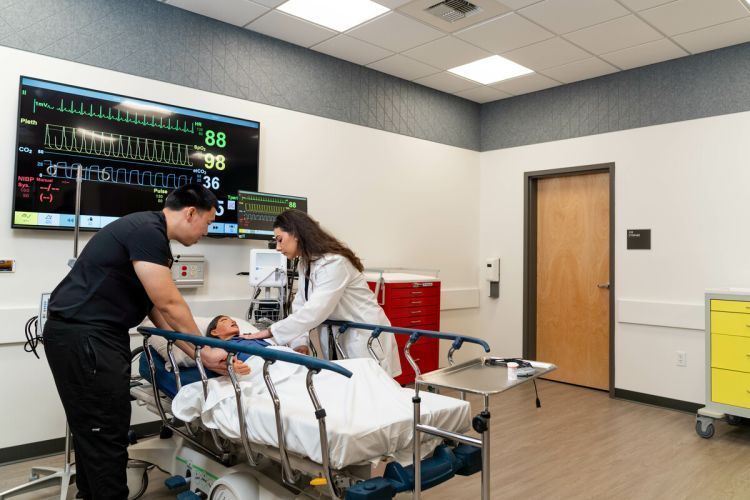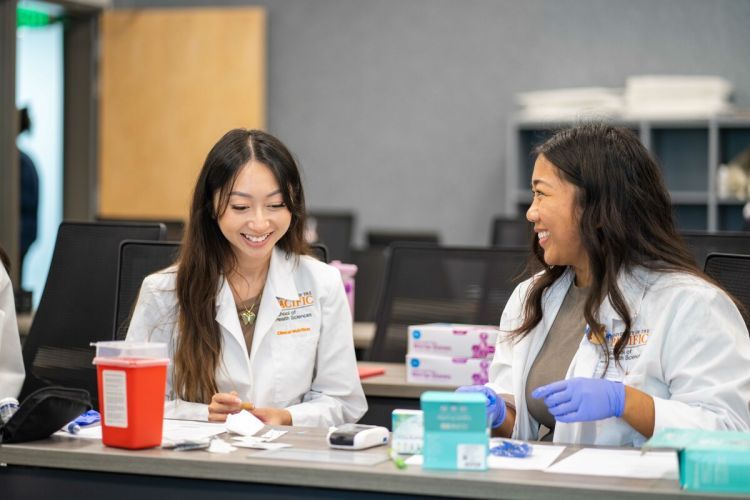Breadcrumb
State-of-the-art facility opens doors for Pacific Physician Assistant students
University of the Pacific’s rise as one of the nation’s leading educators of physician assistants has been boosted by its new Sacramento Campus facility, which has enabled the doubling of spots available to students preparing for one of the best jobs in health care.
Students have attended class and worked in lab settings since Jan. 8 in the Center for Physician Assistant Education, which was officially opened Feb. 6 with a ribbon-cutting ceremony and facility tours for dignitaries.
“This truly is the start of a new era for Pacific’s physician assistant program,” said Tracey DelNero, department chair and program director. “We have been approved by our accrediting body to double our cohort size, so we will be graduating 90 students every year, which is more than twice the size of the average PA program nationwide.

Two Anatomage tables allow students to do virtual dissections.
“Having this amazing building allows us the space and educational equipment to provide a very high-quality education for a growing number of students.”
The Master of Physician Assistant Studies is a 27-month, year-round program. As part of the curriculum, students conduct about 2,000 hours of clinical rotations throughout the West Coast, with most rotation sites located in underserved communities in the Central and San Joaquin valleys.
The demand for entry into physician assistant programs is skyrocketing. Pacific received almost 2,000 applications last year.
“I want to be able to put this day into context,” said Pacific President Christopher Callahan. “What we are seeing is growth that we have never seen before and success like we have never seen before. And if you want to see the epicenter of that growth, come to the Sacramento Campus. This is where you see the vitality of Pacific in its most visual way.”
U.S. News and World Report ranks physician assistant as No. 2 in a report of the best health care jobs and No. 5 among all jobs. Employment growth for physician assistants is expected to increase more than 26% between 2022 and 2032, according to the Bureau of Labor Statistics. Physician assistants work in a variety of health care settings, from outpatient care to operating rooms.
“The center is emblematic of Pacific’s student-centric approach to teaching and learning,” said Executive Vice President for Academic Affairs and Provost Gretchen Edwalds-Gilbert. “Our state-of-the-art facility makes it possible for our faculty to provide the best integrated learning experiences for students, preparing them to excel as physician assistants in the community.”
Bryan McLaughlin ’25, class president for his cohort, worked as a paramedic in San Diego before applying to “Pacific, the university I grew up admiring.” McLaughlin is a Stockton native.
“I will do my clinical rotations soon. I am looking forward to that experience,” he said. “The impact I had as a paramedic made me want to do more with medicine, particularly for underserved communities. I wondered what more I could do with expanded knowledge, resources and time. That is what drew me to Pacific and the PA program.”

Students learn advanced techniques on high-fidelity manikins in the simulation center.
The Physician Assistant Program is one of 10 in the School of Health Sciences, which is growing rapidly and helping redefine health care education in Sacramento and the surrounding area.
“This facility shows our commitment to the profession and to the community,” said Nicoleta Bugnariu, dean of the School of Health Sciences. “All of our programs work very closely with one another. We also are poised to work alongside the Dugoni School (of Dentistry) with the innovative Pacific Health Care Collaborative opening soon in Sacramento.
“Expansion is our current mode, so stay tuned.”
Program and facility highlights:
- The 22,500 square-foot facility includes a simulation wing, procedure lab/lecture space, a 98-seat classroom, small group learning rooms, social/study areas and an administrative suite.
- The new equipment includes six high-fidelity manikins and two Anatomage Tables—6-foot-long touch screens that allow students to see and interact with a cadaver for virtual dissections.
- Pacific’s program is unique in the amount of technical and procedural skills students learn to prepare them for more advanced and trauma-related settings.
- Robust, interprofessional training prepares students to work in the collaborative, team-based model of modern health care. Students interact regularly with other programs in Pacific’s School of Health Sciences.
- Medical Spanish is taught within the curriculum to meet the needs of the community.






